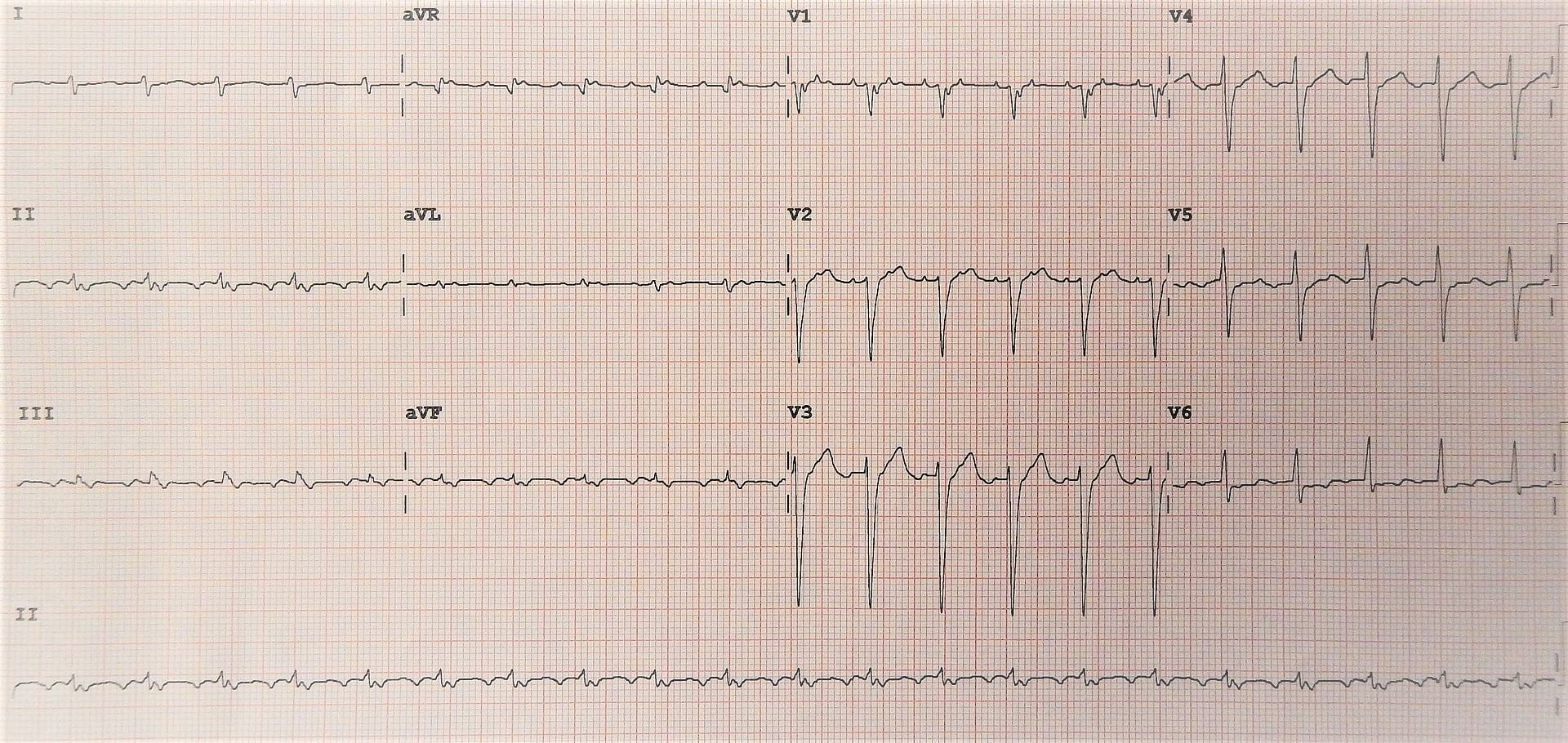The atria contract at a rapid rate but unlike atrial fibrillation, these contractions are very much organized. The potentials are because of re-entry into atrial muscles. (In AF it was multiple foci).
The atria beat at a rate of about 300 per minute. Out of these 300 regular contractions (irregular in AF), some will pass through to ventricles via AV node. Depending on the ratio of passed potentials to ventricles, we might see a rate of 150 (if every alternate potential passes through) per minute or 100 per minute (if every 3rd potential passes through) 75 per minute (if every 4th potential passes through)
In the below image, you can see 5:1 and 4:1 ratio – Such ECGs can be irregular but most of the ECGs will have one ratio instead of 2 or 3 ratios in a single ECG.
As in the case of AF, even here the potentials are originating above the ventricles. Due to this, the resultant QRS complexes are narrow complex waves.
Look for saw toothed appearance of P waves on the ECG (especially on Lead II). R waves can be regular on most of the occasions.
The following image is Atrial fluter but may not look like classic saw-tooth pattern. The lead II shows inverted p waves and one of the p waves is hiding in the preceding T wave, resulting in 2:1 pattern.
